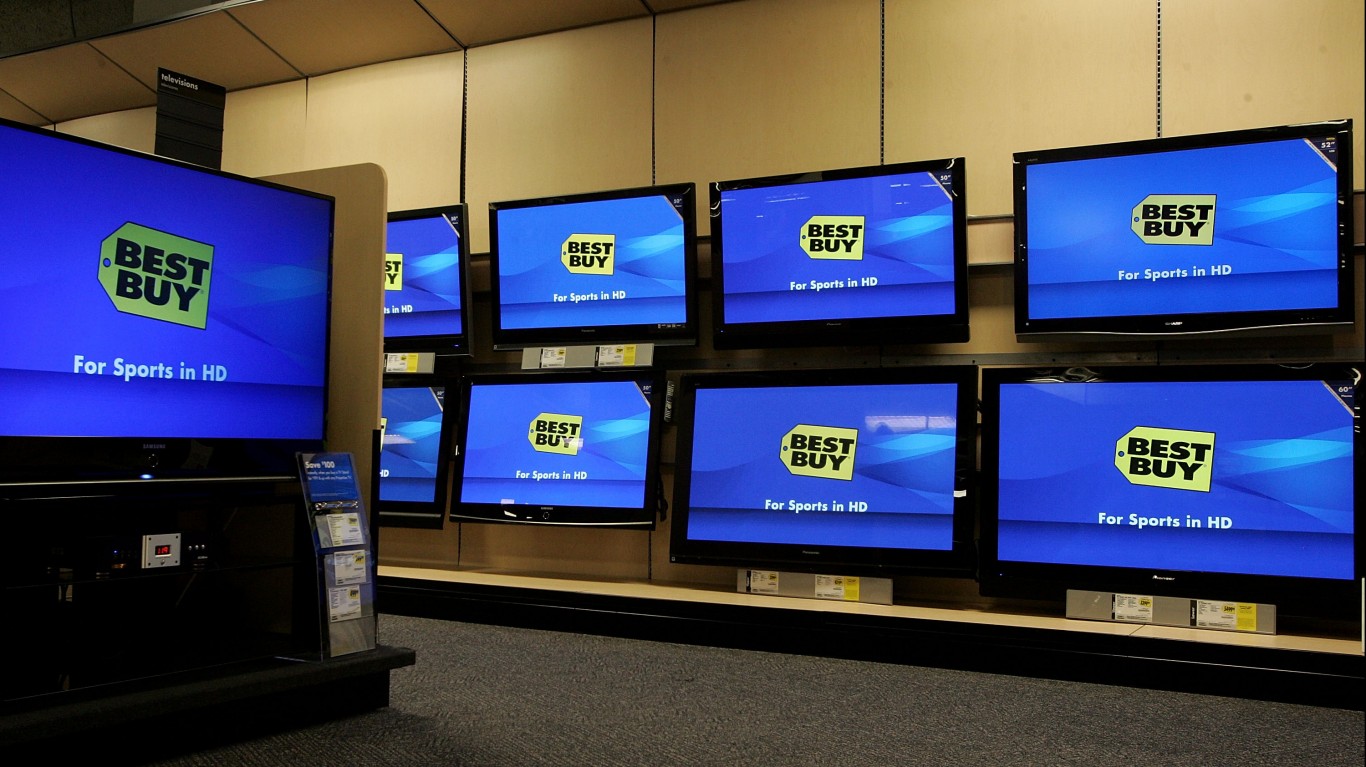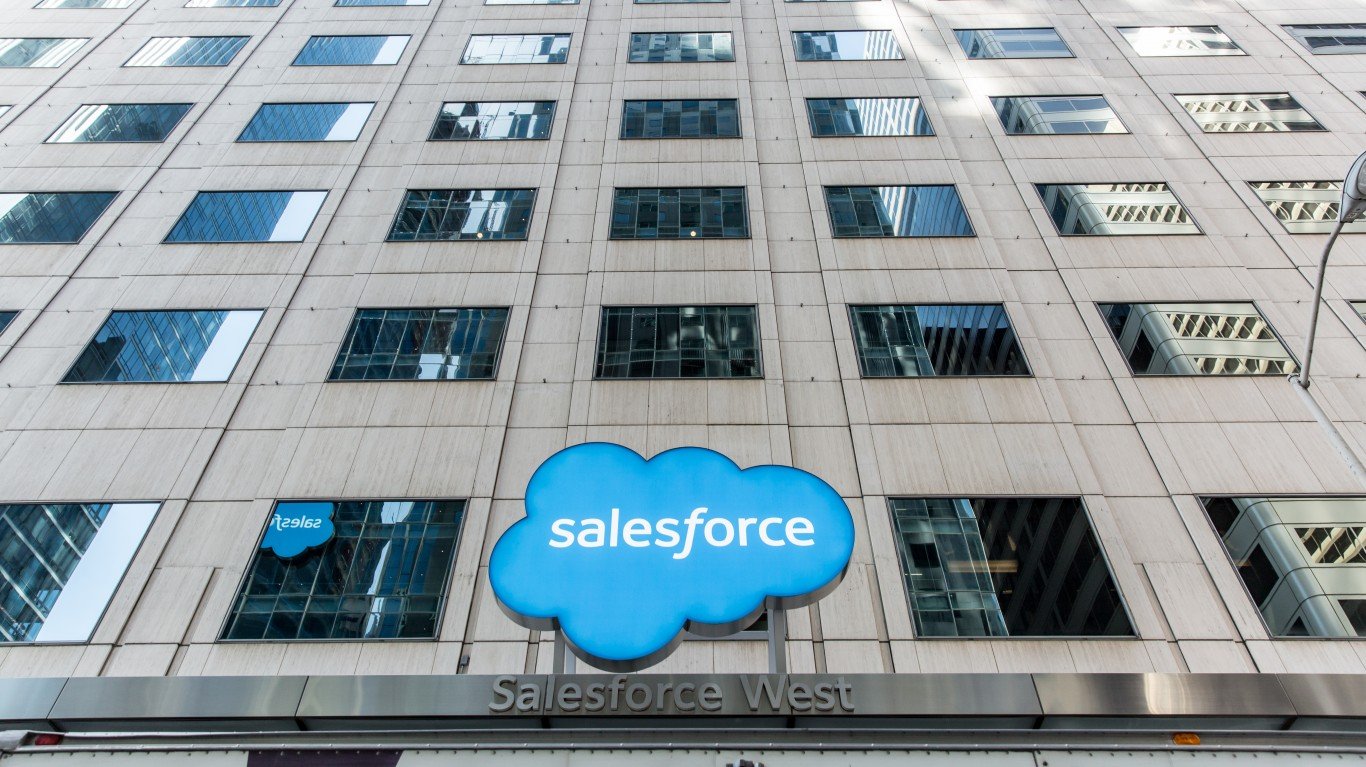

After U.S. markets closed on Thursday, Affirm Holdings reported a narrower-than-expected loss per share and revenue that was 9% above the consensus estimate. Revenue rose by 22% year over year. Affirm also issued upside revenue guidance for the current quarter. Shares traded up more than 26% shortly after Friday’s opening bell.
Gap reported earnings per share (EPS) well above the consensus estimate but missed on revenue. Year over year, revenue was down by 8%, with same-store sales down 6%. The company also issued downside revenue guidance for the current quarter. Shares traded up 3.3%.
Marvell Technology beat estimates on both the top and bottom lines, but revenue fell by 11.6% year over year. Guidance was in line with consensus estimates. More was expected, especially given Nvidia’s glowing report on Wednesday. The stock traded down 7.3% early Friday.
Nordstrom also beat top-line and bottom-line estimates, but revenue was down nearly 8% year over year. The company was able to clear out inventory, costing the department store 8.5% in gross merchandise value. Nordstrom reaffirmed EPS guidance for the 2024 fiscal year but sees revenue down 4% to 6% year over year. The stock traded down 5.7% early Friday.
No notable earnings reports are being released on Friday. Before markets open on Monday, Nordic American Tankers will post its quarterly earnings.
Here is a look at what analysts expect when these three companies report quarterly results Tuesday morning.
Best Buy
Over the past 12 months, shares of technology retailer Best Buy Co. Inc. (NYSE: BBY) have slipped by about 5.8%. They reached a 52-week high in early February but have retreated about 21.5% since then. Sales have been more or less stagnant since the third quarter of 2019, when the total was $9.76 billion. In the first quarter of this year, sales totaled $9.47 billion. As long as the dividend is not endangered, though, investors will likely be willing to hold on to the stock.
Analysts cannot give up that dividend either. Of 30 brokerages covering Best Buy, 22 rate the shares at Hold and six have a Buy or Strong Buy rating. At a recent price of around $73.00 a share, the upside potential based on a median price target of $75.00 is 2.7%. Based on a high price target of $110.00, the upside potential is 50.7%.
For the company’s fiscal 2024 second-quarter revenue, analysts anticipate $9.52 billion, which would be up 0.,5% sequentially but down 7.8% year over year. Adjusted EPS are forecast at $1.07, down 6.6% sequentially and by 30.5% year over year. For the full fiscal year ending in January, current estimates call for EPS of $6.10, down 13.9%, on sales of $44.29 billion, down 4.3%.
The stock trades 12.0 times expected 2024 EPS, 10.7 times estimated 2025 earnings of $6.85 and 9.5 times estimated 2026 earnings of $7.66 per share. Its 52-week trading range is $60.78 to $93.32. Best Buy pays an annual dividend of $3.68 (yield of 4.93%). Total shareholder return for the past year was negative 1.28%.
Big Lots
Discount retailer Big Lots Inc. (NYSE: BIG) has seen a share price decline of more than 73% over the past 12 months, including a 58.5% drop so far in 2023. The 52-week high was posted nearly a full year ago and shares have been sliding ever since.
Sales peaked in the April quarter of 2021 and have been on a downward trend since, closing the first quarter of this year more than 35% lower. Bloomberg reported earlier this month that the company had retained AlixPartners to help reverse Big Lots course. Investors will want to hear more about what the company plans to do.
Analyst sentiment tends toward the downside. Of 10 brokerages covering the stock, five have a Strong Sell rating and four have Hold ratings. At a share price of around $6.00, the stock trades right at its median price target. At the high target of $13.00, the upside potential is about 117%.
Fiscal 2024 second-quarter revenue is forecast at $1.1 billion, down 2% sequentially and by 18.5% year over year. Analysts expect an adjusted loss per share of $4.12, worse than the prior quarter’s loss of $3.40 per share and worse than the year-ago quarter’s loss of $2.28 per share. For the full fiscal year ending in January, the consensus estimates call for an adjusted loss of $9.88 per share compared to last year’s loss per share of $5.96 on sales of $4.84 billion, down 11.4%.
Big Lots is not expected to post a profit in 2024 or 2025. The enterprise value to sales multiple is 0.5 in each of those years. The 52-week trading range is $4.78 to $24.35. Big Lots pays an annual dividend of $1.20 (yield of 19.67%, and that’s not a typo), and the total shareholder return for the past year was negative 71.80%.
Nio
China-based EV maker Nio Inc. (NYSE: NIO) has lost nearly 44% from its share price over the past 12 months. The stock price has increased by more than 9% so far in 2023, including a 50% bounce between mid-July and early August based on improving EV sales in China. Since that peak, the stock has given back all but about 3% of the increase.
The Tesla-spawned price war in China has been especially hard on Nio, and the struggling Chinese economy is not providing any support for EV makers or buyers. Analysts have dramatically reduced their revenue expectations for Nio’s second quarter, and that will give the company a decent chance to slip over a low bar. What that will mean depends on Nio beating estimates by a big margin. That probably will not happen.
There are 27 analyst ratings on Nio’s stock, and 18 are Buy or Strong Buy. At a share price of around $10.60, the upside potential based on a median price target of $14.26 is around 34.5%. At the high target of $20.79, the upside potential is 96.2%.
Thank you for reading! Have some feedback for us?
Contact the 24/7 Wall St. editorial team.
 24/7 Wall St.
24/7 Wall St.


